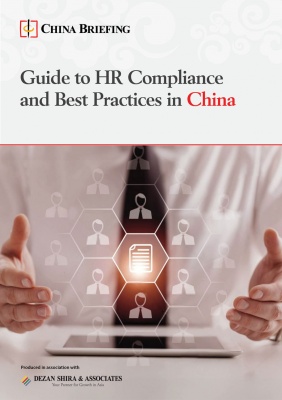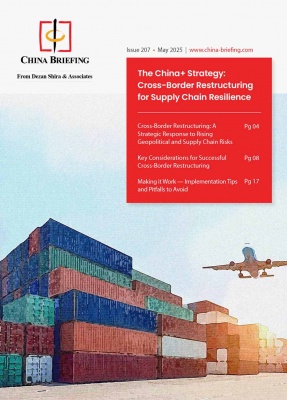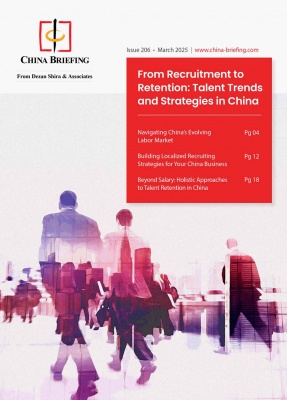China’s Fertility Services Market: Navigating Growth, Challenges, and Opportunities
- China is facing a demographic crisis with declining birth rates and an aging population, leading to an increased demand for fertility services. Infertility rates have risen significantly, and delayed parenthood is contributing to the need for assisted reproductive technologies (ART).
- The Chinese government has introduced policies to make ART more accessible, including medical insurance coverage for fertility treatments and regional subsidies. These efforts are helping to lower the financial barriers to fertility services, but legal restrictions remain, particularly for single women seeking egg freezing.
- The ART market is poised for growth, offering opportunities in medical devices, pharmaceuticals, clinical services, and research.
China’s fertility sector is undergoing rapid transformation as birth rates decline and demand for reproductive services rises. With infertility affecting nearly one in six couples, assisted reproductive technologies (ART), including in-vitro fertilization (IVF) and egg freezing, have gained traction.
Government policies, such as medical insurance coverage for ART in multiple provinces and regional subsidies for IVF, are making fertility treatments more accessible. Meanwhile, debates over reproductive rights, particularly for single women seeking egg freezing, are driving discussions on policy reforms.
As the market grows, competition between domestic and international players is intensifying, presenting both opportunities and challenges for the industry.
China’s shifting demographic trends and the growing demand for fertility services
Declining birth rates and population trends
China, historically known for its massive population, is now facing a demographic challenge. The country’s birth rate has declined sharply, dropping from 10.41 births per 1,000 residents in 2019 to just 6.39 in 2023. Meanwhile, the total fertility rate has plummeted to 1.0, well below the replacement level of 2.1. With consecutive years of negative population growth and an ageing population—15.4 percent of citizens are now over 65—China’s long-term demographic outlook raises concerns for economic sustainability.
This shift is accompanied by a shrinking workforce and a rising elderly dependency ratio, which has worsened from 8:1 in 2010 to just 4:1 in 2023. Projections suggest China’s total population could fall to 767 million by 2100, signalling profound economic and social changes ahead.
Rising infertility rates and delayed parenthood
Adding to these demographic pressures is a significant increase in infertility. The proportion of couples affected has risen from 11.9 percent in 2007 to 18.2 percent in 2023—meaning nearly one in six couples struggles to conceive. This trend is driven by multiple factors, including lifestyle changes, pollution, and rising stress levels. As infertility becomes more prevalent, demand for ART and fertility treatments has surged, creating a rapidly expanding industry.
At the same time, Chinese couples are delaying parenthood. The average age of first childbirth has risen from 24 in 1990 to 28 in 2020, reflecting shifting attitudes towards career priorities, financial stability, and the high costs of raising children. This trend, combined with declining birth rates, suggests that China’s population decline may persist despite government incentives.
The fertility industry’s growing role
In response to these trends, China has seen a rising demand for fertility services, including IVF, egg freezing, and hormone treatments. With more couples facing difficulties conceiving, the assisted reproduction sector is poised for growth, attracting investment and policy attention. As the government continues to encourage childbirth through financial incentives and policy support, fertility clinics and reproductive health services are likely to play a crucial role in shaping China’s demographic future.
Policy and financial support for fertility treatments
As China faces persistently low fertility rates, policymakers have increasingly focused on expanding access to ART as a key fertility support measure. A major step forward has been the inclusion of ART services under public medical insurance, with 27 provinces now offering coverage for treatments such as IVF, embryo freezing, and intrauterine insemination (IUI). By early 2024, these policy measures had benefited over 1.03 million patients nationwide, significantly lowering the financial burden associated with fertility treatments. In Beijing, where ART services were officially added to basic health insurance in July 2023, over 32,000 patients received treatment within the first nine months, with public insurance covering RMB 190 million (about US$26 million) of the total RMB 280 million (US$38.44) spent on ART procedures. Other cities, including Shanghai, Gansu, and Shandong, have followed suit, ensuring broader access to fertility treatments.
Beyond insurance coverage, regional financial subsidies have further enhanced ART accessibility. Hangzhou, for instance, provides reimbursement for ART procedures, reducing out-of-pocket costs for couples struggling with infertility. In Liaoning province, families who have lost their only child are eligible for a free IVF cycle, recognizing the emotional and demographic impact of such losses. Similarly, Shaanxi province fully covers ART expenses for eligible couples, ensuring cost is not a barrier to those seeking to conceive. These localized initiatives align with China’s broader strategy to boost birth rates by directly addressing the high costs associated with infertility treatments.
Regulatory changes have also played a crucial role in expanding access to ART. Since 2016, family planning certificates have no longer been required for ART treatments, removing bureaucratic hurdles that previously restricted eligibility. However, single women remain unable to access ART services, including egg freezing, due to existing regulations that tie reproductive rights to marital status. Legal challenges and public debate continue to push for reforms, but no official policy changes have been enacted to date.
China’s fertility services market overview
China’s ART market is undergoing rapid growth, fueled by a convergence of factors such as rising infertility rates, increasing societal acceptance of fertility treatments, and strong government support for reproductive health. As the market continues to expand, it is crucial to understand the forces driving this growth, the challenges faced by the industry, and how ART can potentially address some of China’s demographic challenges.
ART is an umbrella term that encompasses a range of reproductive technologies used to assist couples who are struggling with infertility. The primary techniques under this umbrella include artificial insemination, IVF, intracytoplasmic sperm injection (ICSI), and preimplantation genetic testing (PGT), each with its own unique methods and purposes. Over the years, ART has become a critical solution for couples who face challenges in conceiving naturally, and its growing acceptance in Chinese society reflects broader trends in healthcare and fertility.
In terms of market size, China’s ART services are valued at approximately US$2.31 billion in 2023, and this is expected to grow to US$3.90 billion by 2030, marking a compound annual growth rate (CAGR) of 7.8 percent between 2024 and 2030. This significant growth can be attributed to several factors, including a rising number of infertile couples, greater societal acceptance of ART procedures, and supportive government policies aimed at reversing declining birth rates.
As of 2024, the ART services market is anticipated to exceed RMB 34.9 billion (US$4.79 billion), which indicates the sector’s crucial role in addressing China’s fertility challenges. This demand is anticipated to only rise further, especially with the ongoing shifts in China’s demographic landscape.
Market segmentation
China’s ART market is made up of a diverse array of services, with IVF making up the largest portion of the market—45.45 percent of the total ART services market. Following IVF, ICSI accounts for 36.04 percent of the market, while artificial insemination represents 12.99 percent, and PGT holds 5.52 percent. The segmentation of services speaks to the varying needs of couples depending on their specific fertility challenges, and the different ART methods offer tailored solutions to meet those needs.
Market composition: Public vs. private providers
The ART services market in China is dominated by public healthcare institutions, which control a large portion of the market. As of 2023, 86.04 percent of ART services are provided by public hospitals, with private clinics making up only 14.29 percent of the market. This distribution is reflective of the country’s broader healthcare structure, in which public hospitals have long been the primary providers of specialized medical services. The number of ART clinics has steadily increased, but public hospitals still dominate the landscape due to their established infrastructure, funding, and wide patient reach.
The presence of private clinics, however, is growing, and their role in the ART sector is becoming increasingly important. These private institutions cater to more affluent patients who may prefer shorter wait times and specialized services, which are often available at private clinics as opposed to public ones.
IVF
China’s IVF market is experiencing significant growth, driven by increasing demand and supportive policies. Projections indicate that the market will expand from approximately US$5.77 billion in 2024 to about US$11.26 billion by 2033, reflecting a compound annual growth rate (CAGR) of 7.72 percent during this period.
Affordability and accessibility of IVF treatments in China have improved due to initiatives from both the government and private sector. The National Health Commission (NHC) aims to establish one IVF facility for every 2.3 million people by 2025, increasing the total number of facilities to over 600. Additionally, the government is planning to offer free fertility treatments under its national insurance scheme to counteract the declining birth rate.
These efforts are complemented by private clinics expanding their services, creating a competitive landscape that enhances service quality and reduces costs for patients. The IVF sector in China comprises a mix of public and private fertility clinics, collectively striving to meet the growing demand for ART. As of recent data, China has 539 public and private IVF facilities, with plans to increase this number to over 600 by 2025.
This expansion reflects a concerted effort to make fertility services more accessible and affordable, thereby supporting individuals and couples seeking reproductive assistance.
Egg freezing and fertility preservation
In China, the demand for egg freezing and fertility preservation services has been on the rise, with a significant portion of ART patients expressing interest in these options. A study revealed that 56.7 percent of participants supported the establishment of oocyte banking in the country, indicating a growing awareness and desire among women to preserve their fertility for future family planning.
Despite this increasing interest, regulatory barriers persist. Current Chinese health regulations restrict access to egg freezing services to married women with specific medical indications, effectively barring single women from utilizing this technology. This prohibition has led many single women to seek fertility preservation services abroad, often at significant personal expense.
Key challenges in China’s fertility services market
One of the most pressing challenges facing China’s ART industry is its heavy reliance on imported reproductive drugs and medical equipment. Currently, over 50 percent of the materials needed for ART procedures are sourced from abroad, which leaves the industry vulnerable to international supply chain disruptions, particularly in light of global trade uncertainties and geopolitical tensions.
This dependence on foreign products underscores the need for domestic innovation and the development of local manufacturing capabilities. To ensure the long-term sustainability of the ART market, China must invest in research and development to create homegrown alternatives to imported ART products, reducing reliance on external suppliers.
Another key challenge facing the industry is the uneven distribution of ART services across the country. While major cities like Beijing and Shanghai boast a high concentration of ART clinics, rural and less-developed areas have far fewer options for couples seeking fertility treatments. This disparity creates significant access issues, as many couples in smaller cities and rural areas must travel long distances to access ART services, placing financial and logistical burdens on those in need.
Opportunities for foreign businesses and investors
China’s ART market is poised for substantial growth, driven by demographic shifts, technological innovation, and strong government support. For foreign businesses and investors, this presents an exciting opportunity to enter a market that is evolving rapidly.
By aligning with China’s long-term population strategies and technological developments, international companies can play a central role in transforming China’s reproductive healthcare landscape while capitalizing on emerging market trends.
As the ART market in China continues to grow, foreign businesses investors have several key opportunities:
- Medical devices and equipment: The demand for advanced ART technologies, such as IVF equipment and genetic testing devices, will increase. Companies offering state-of-the-art medical devices can tap into this expanding market.
- Pharmaceuticals: With the growing adoption of ART, there will be greater demand for specialized fertility drugs and hormones. Foreign pharmaceutical companies have an opportunity to meet this need with high-quality reproductive drugs.
- Clinical services and expertise: China’s rising middle class is seeking high-quality ART services, which opens doors for foreign providers to establish clinics or form partnerships with local healthcare institutions.
- Research and development: With demand for ART on the rise, R&D in genetics, biotechnology, and fertility science will be key. Companies with strong R&D capabilities can collaborate with Chinese institutions and help drive innovation in ART treatments.
About Us
China Briefing is one of five regional Asia Briefing publications, supported by Dezan Shira & Associates. For a complimentary subscription to China Briefing’s content products, please click here.
Dezan Shira & Associates assists foreign investors into China and has done so since 1992 through offices in Beijing, Tianjin, Dalian, Qingdao, Shanghai, Hangzhou, Ningbo, Suzhou, Guangzhou, Haikou, Zhongshan, Shenzhen, and Hong Kong. We also have offices in Vietnam, Indonesia, Singapore, United States, Germany, Italy, India, and Dubai (UAE) and partner firms assisting foreign investors in The Philippines, Malaysia, Thailand, Bangladesh, and Australia. For assistance in China, please contact the firm at china@dezshira.com or visit our website at www.dezshira.com.
- Previous Article Conducting a Company Health Check in China 2025: Essential Steps and Checklists
- Next Article Hong Kong Budget 2025-26: What Businesses Need to Know


























